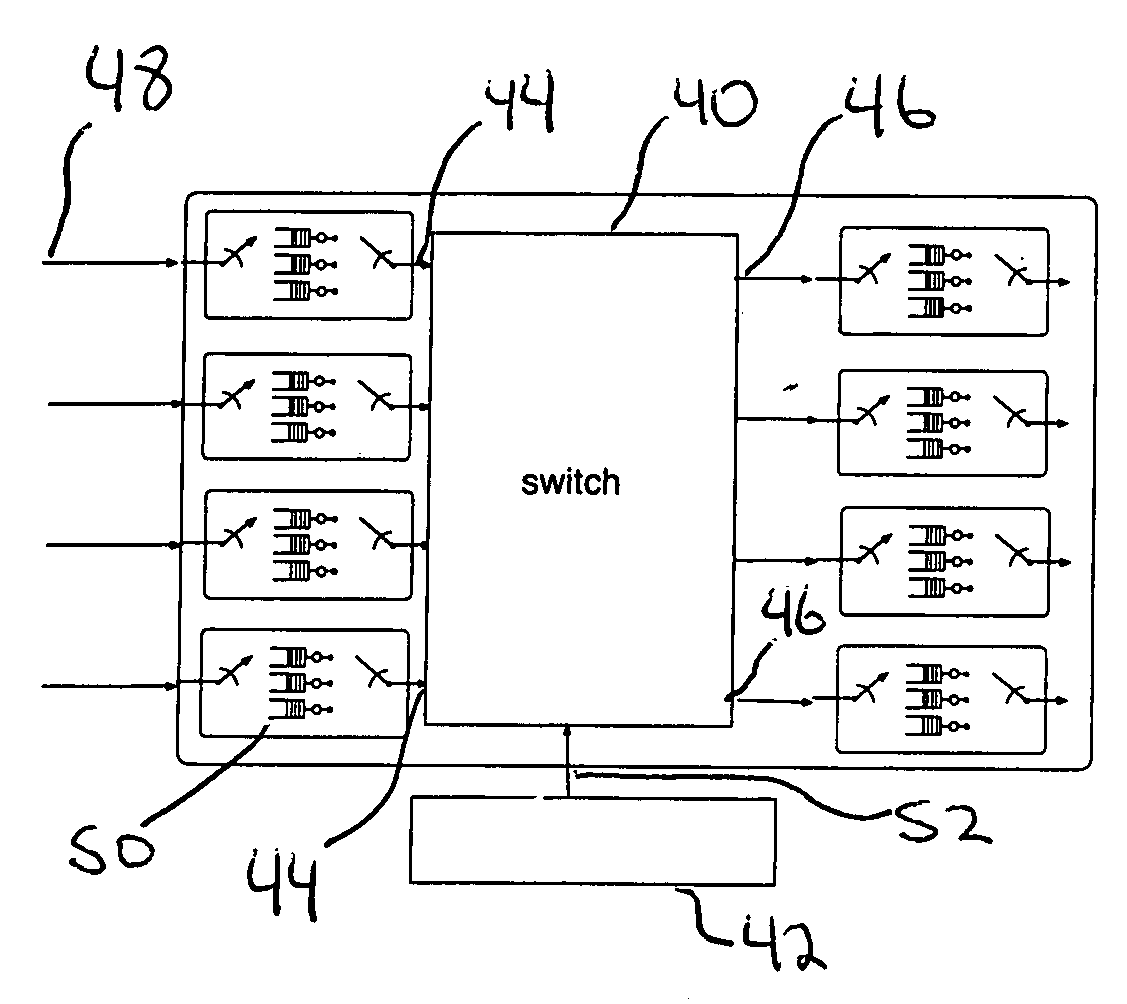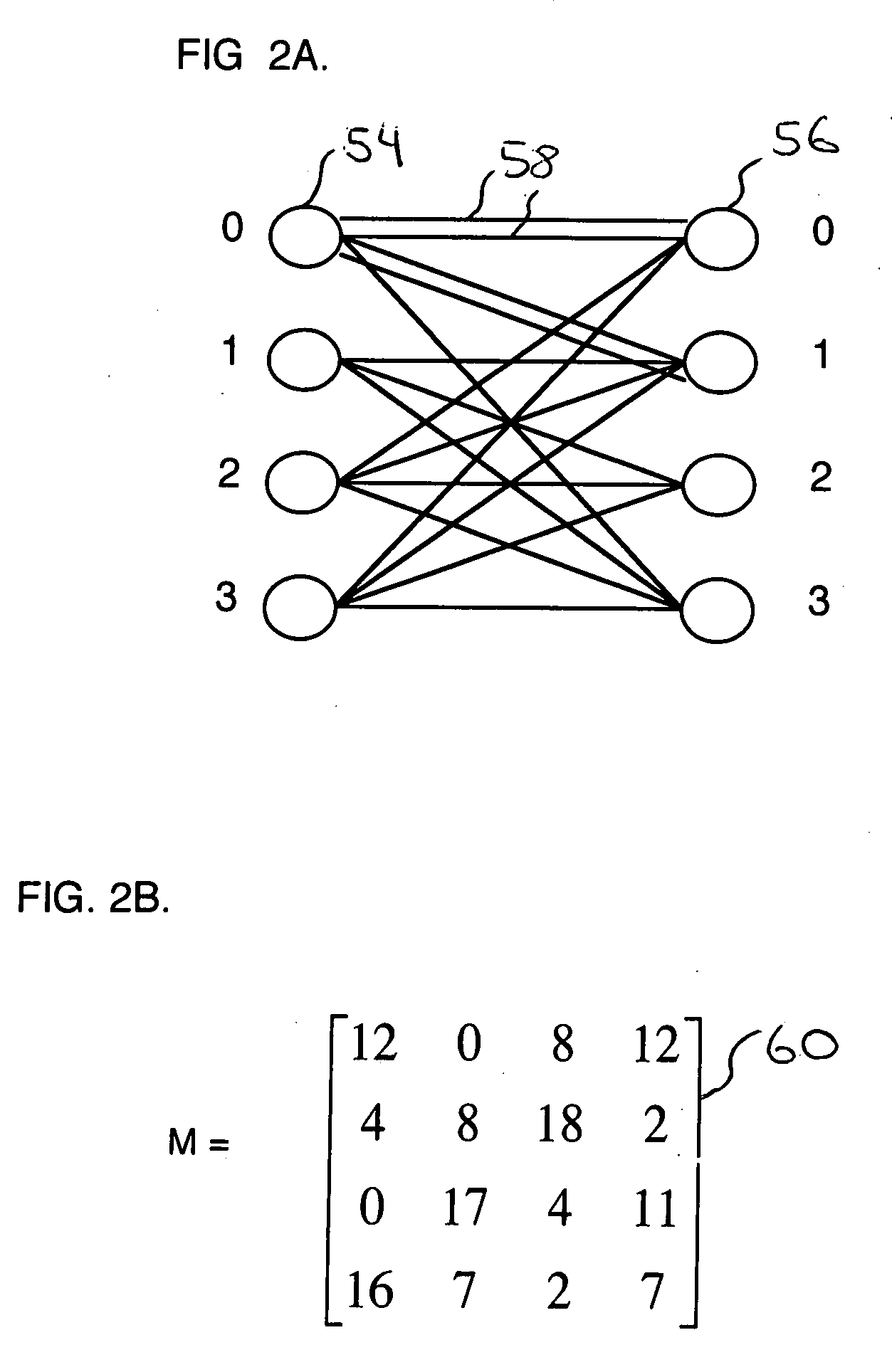Method and apparatus to schedule packets through a crossbar switch with delay guarantees
a crossbar switch and packet schedule technology, applied in the direction of electrical equipment, data switching by path configuration, digital transmission, etc., can solve the problems of increasing the need for delay guarantees, large memory bandwidth of switches, and difficulty in achieving output buffered switches, etc., to reduce delay jitter, reduce delay jitter, and simple implementation
- Summary
- Abstract
- Description
- Claims
- Application Information
AI Technical Summary
Benefits of technology
Problems solved by technology
Method used
Image
Examples
Embodiment Construction
[0100]FIG. 1 shows a switch 40 having a proposed Guaranteed Rate and Delay (GRD) scheduler module 42 implementing an exemplary embodiment of the present invention. Switch 40 is an N×M input-output-buffered packet switch with N input ports 44 and M output ports 46. Typically N=M, although this equality is not necessary. Typically, variable size packets of data arrive on an incoming fibers 48. Each Input Port 44 is associated with multiple “Virtual Output Queues” (VOQ) 50, and at each input port one VOQ is associated with each output port. Typically, an arriving packet is fragmented into multiple fixed-size cells for transmission through the switch, and these cells are forwarded into the appropriate Virtual Output Queue 50, where they await transmission to the desired output port.
[0101]A Frame consists of multiple time-slots. In each time-slot, the GRD scheduler 42 matches each of output ports 46 to at most one of input ports 44. Switch 40 couples selected ones of input ports 44 to co...
PUM
 Login to View More
Login to View More Abstract
Description
Claims
Application Information
 Login to View More
Login to View More - R&D
- Intellectual Property
- Life Sciences
- Materials
- Tech Scout
- Unparalleled Data Quality
- Higher Quality Content
- 60% Fewer Hallucinations
Browse by: Latest US Patents, China's latest patents, Technical Efficacy Thesaurus, Application Domain, Technology Topic, Popular Technical Reports.
© 2025 PatSnap. All rights reserved.Legal|Privacy policy|Modern Slavery Act Transparency Statement|Sitemap|About US| Contact US: help@patsnap.com



